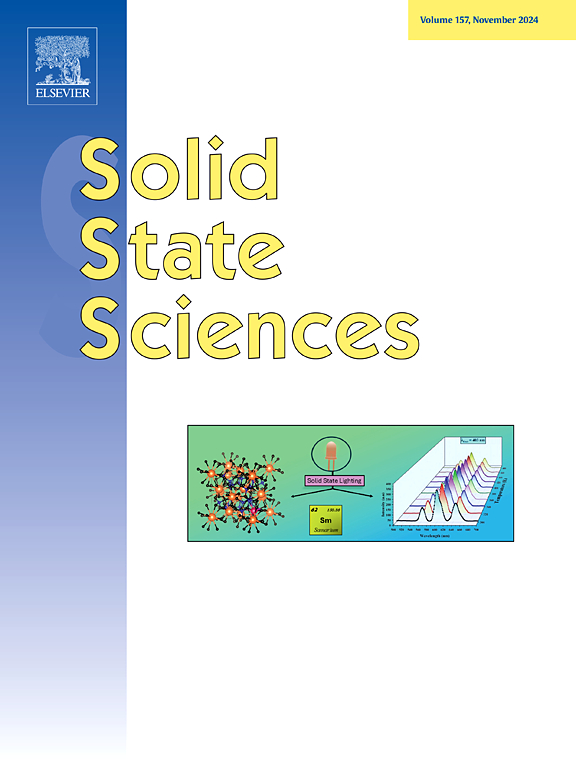A new structure type of the Na3Yb(BO3)2: Synthesis, crystal structure, thermal behavior, ionic conductivity, and spectroscopy
IF 3.4
3区 化学
Q2 CHEMISTRY, INORGANIC & NUCLEAR
引用次数: 0
Abstract
New structure of Na3Yb(BO3)2 has been synthesized for the first time using a solid-state reaction method. The crystal structure of the title compound was elucidated using a simulated annealing method. Samples used in powder diffraction analysis for structure determination were prepared via solid-state synthesis. To refine obtained crystal structure, the Rietveld method was applied, yielding the following parameters: triclinic symmetry (sp. gr. P .), a = 5.1661(1) Å, b = 6.6249(2) Å, c = 8.5991(2) Å, α = 92.089(1)°, β = 93.281(2)°, γ = 88.010(1)°, Z = 2, V = 293.47(1) Å3, Rwp = 4.83, GOF = 4.85. The double borate Na3Yb(BO3)2 congruently melted at 1119 °C exhibited a complex thermal profile, as evidenced by DSC, with four polymorphic transitions observed at 277 °C, 497 °C, 653 °C, and 694 °C. Ab initio calculated IR spectrum of Na3Yb(BO3)2, exhibited a high degree of agreement with the experimentally obtained IR spectrum. The band gap of the title compound was calculated to be 4.7(2) eV using the combination of the Tauc method and DASF method. The calculated energy barrier for sodium ion migration, equal to 0.5 eV, was in a reasonable agreement with the experimentally determined activation energy of 0.75 eV. The title compound exhibited an ionic conductivity of 0.4 × 10−3 S/cm at 1023 K.

求助全文
约1分钟内获得全文
求助全文
来源期刊

Solid State Sciences
化学-无机化学与核化学
CiteScore
6.60
自引率
2.90%
发文量
214
审稿时长
27 days
期刊介绍:
Solid State Sciences is the journal for researchers from the broad solid state chemistry and physics community. It publishes key articles on all aspects of solid state synthesis, structure-property relationships, theory and functionalities, in relation with experiments.
Key topics for stand-alone papers and special issues:
-Novel ways of synthesis, inorganic functional materials, including porous and glassy materials, hybrid organic-inorganic compounds and nanomaterials
-Physical properties, emphasizing but not limited to the electrical, magnetical and optical features
-Materials related to information technology and energy and environmental sciences.
The journal publishes feature articles from experts in the field upon invitation.
Solid State Sciences - your gateway to energy-related materials.
 求助内容:
求助内容: 应助结果提醒方式:
应助结果提醒方式:


